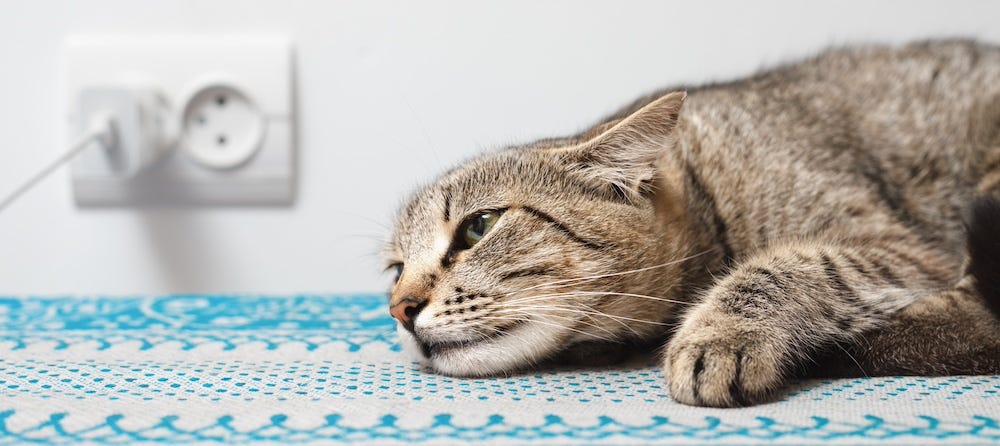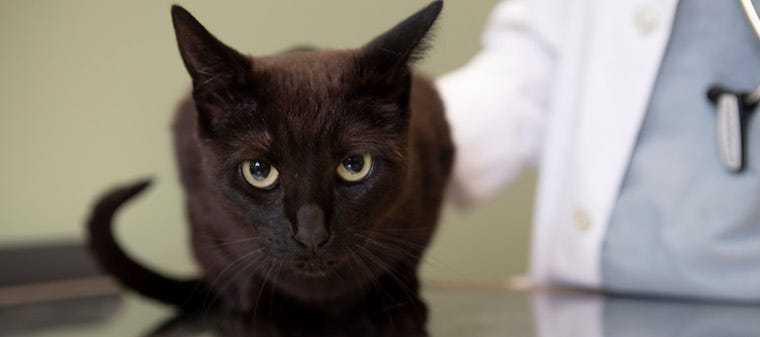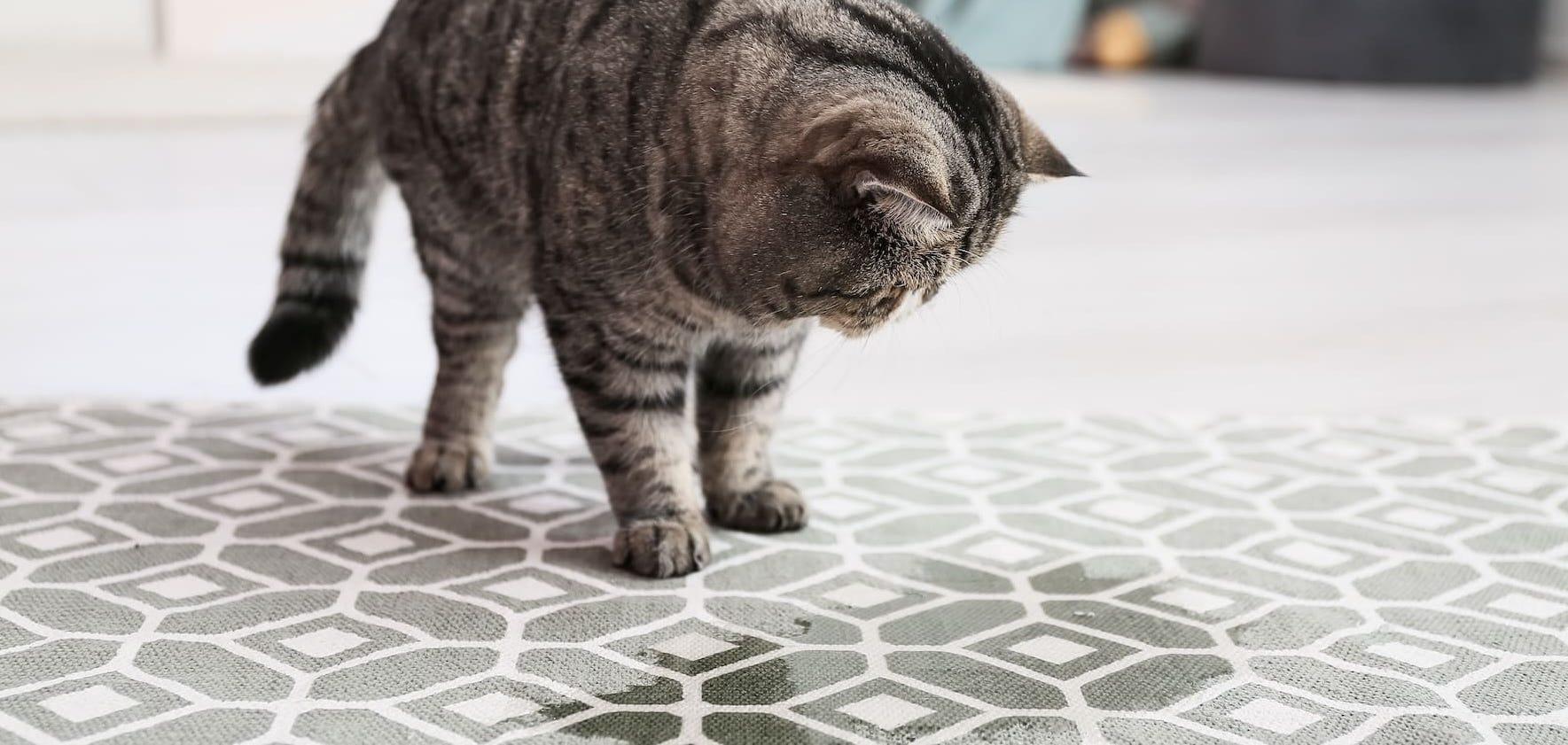Cats are experts at hiding discomfort, which makes spotting their pain tricky for pet parents. Once you know what to look for and how to take action, you can make a real difference in your cat’s well-being. We’ll explore key signs of pain in cats, safe ways to ease discomfort at home, and which medications to avoid.
How to recognize pain in your cat
Is my cat in pain? Cats can’t tell us when they’re hurting, but they do send signals if you know what to watch for. Here are common signs of pain in cats:
- Vocalization: Unusual meowing, growling, or hissing.
- Changes in litter box behavior: Going to the bathroom outside the litter box, using it more frequently, or straining to urinate could indicate discomfort.
- Difficulty breathing: Open-mouth breathing, wheezing, gasping, or coughing.
- Changes in normal movement: Limping, stiffness, or difficulty jumping and climbing.
- Abnormal grooming habits: Overgrooming a specific area or neglecting grooming altogether.
- Hiding or avoiding interaction: Cats in pain often isolate themselves.
- Appetite loss or drooling: Cats in pain may refuse food or water.
- Vomiting or diarrhea: This indicates discomfort in their abdomen.
By paying close attention to these behaviors, you can intervene early and seek veterinary care before the problem worsens.
Understanding the cat pain scale: The Feline Grimace Scale
The Feline Grimace Scale (FGS) is a useful tool for assessing pain in cats. Developed by veterinarians to use in clinical practice, this scale measures subtle changes in a cat’s facial expression. Veterinarians then grade each indicator or action unit (AU) on a scale of 0-2, with 0 being absent of pain and 2 being markedly painful. It looks at these five key indicators:
- Ear position: Flattened or outwardly rotated ears indicate discomfort.
- Whisker position: Tense whiskers that pull forward or flatten suggest pain.
- Eye squinting: Partially closed eyes or a “grimace” are signs of distress.
- Head position: Cats in pain may keep their head lower than their shoulders.
- Muzzle tension: A tight muzzle or drawn-back lips signal discomfort.
Pain indicators absent:

Pain indicators moderately present:
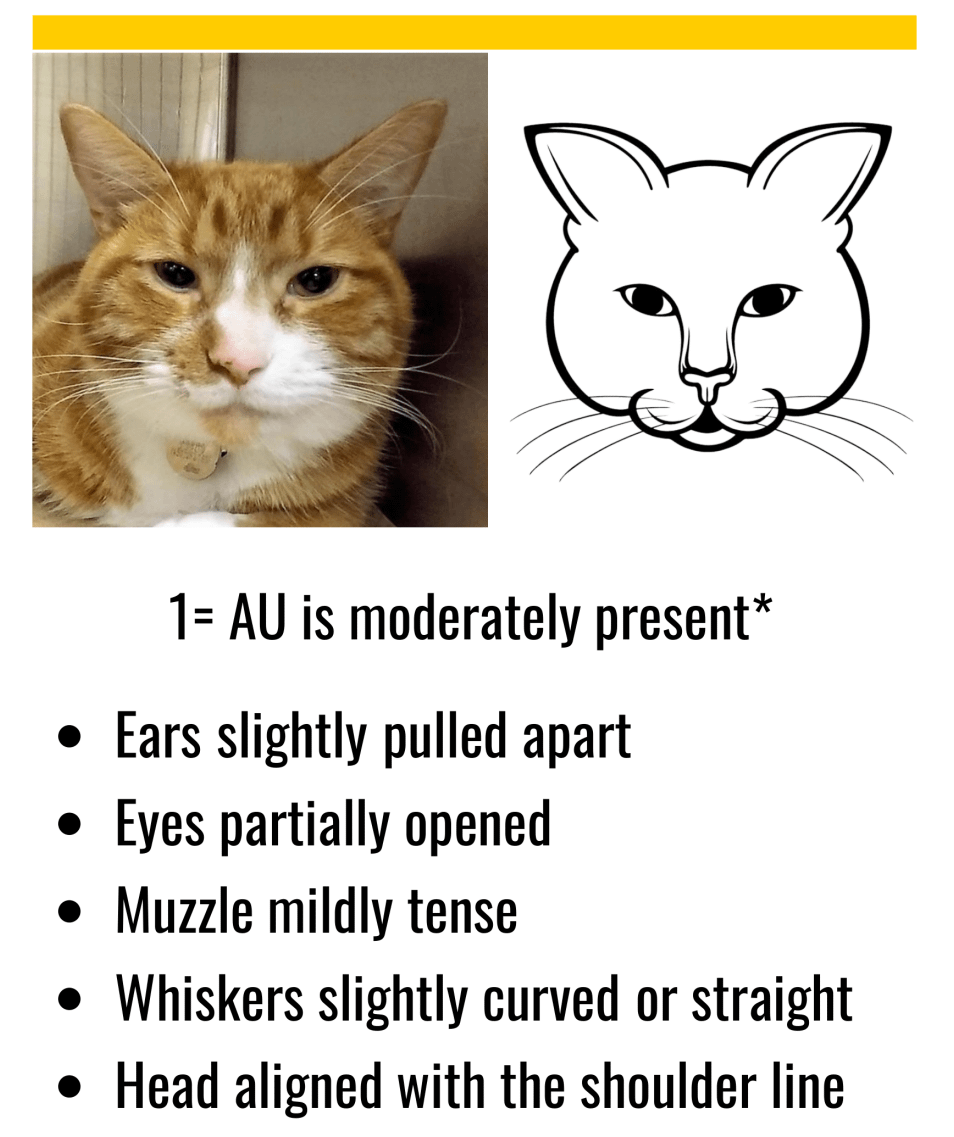
Pain indicators markedly present:
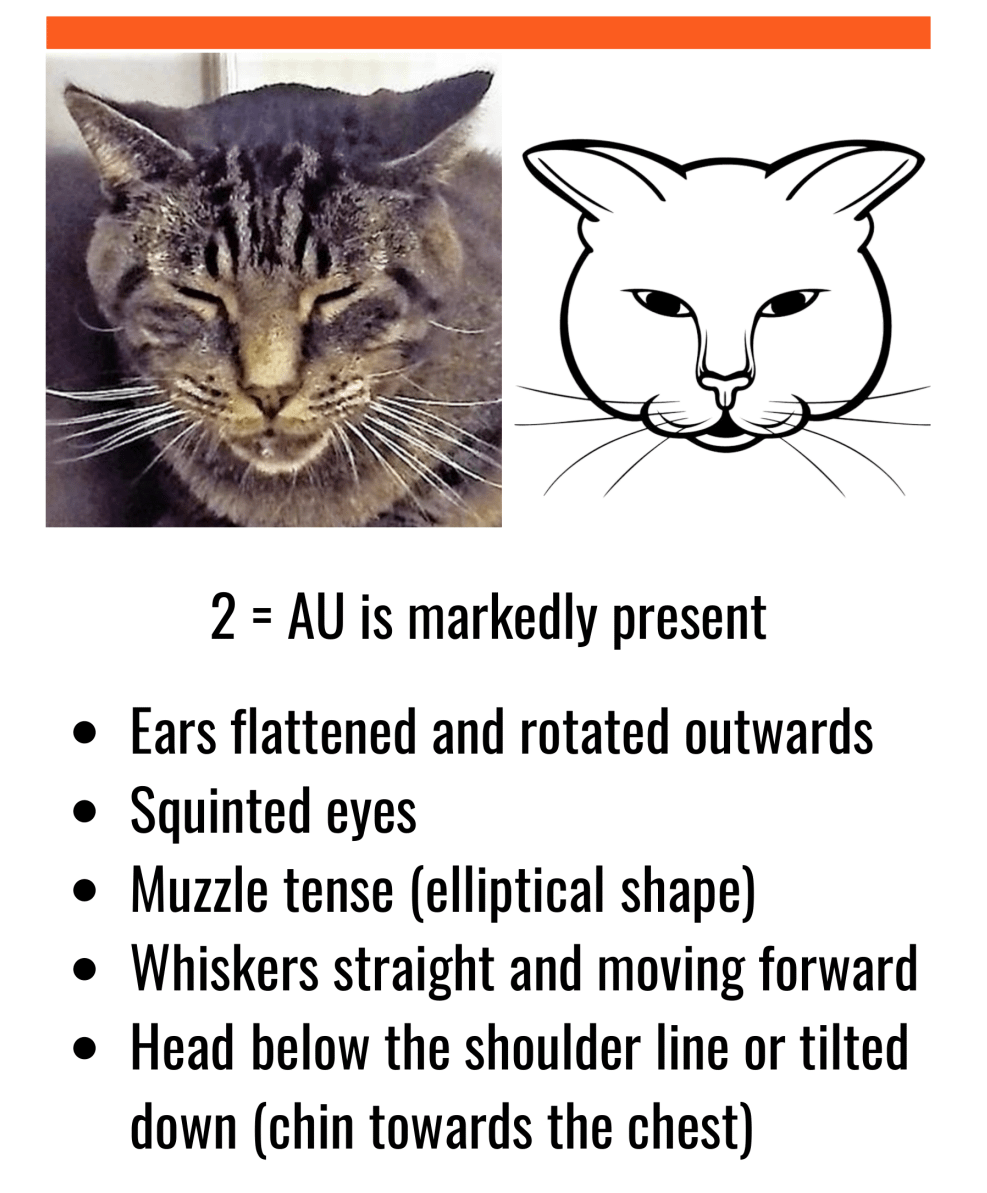
(Photos from Feline Grimace Scale Fact Sheet.)
Tracking these signs helps both pet parents and veterinarians assess pain levels accurately and adjust treatment accordingly.
What can I give my cat for pain relief at home?
It’s natural to want to ease your cat’s discomfort, but options for at-home pain relief are limited. Cats are extremely sensitive to medications, and even common over-the-counter drugs can be toxic to them. Here are safe steps you can take at home:
- Supplements: Glucosamine or fish oil, under veterinary supervision, can support joint health over time.
- Mild heat therapy: A warm (not hot) compress can soothe sore muscles and joints for 5-10 minutes at a time. Make sure your vet approves heat therapy, as it may not be suitable for all conditions.
- Prescription pain relief: Always consult your vet before administering any medication to your cat.
- Environmental adjustments: Create a quiet, stress-free space where your cat feels comfortable. A deep dive on this below.
While it’s tempting to try human pain relievers, they can do more harm than good—so always follow veterinary advice first.
Can I give my cat aspirin for pain relief?
No, you should never give your cat aspirin or any other over-the-counter human pain medication without veterinary guidance. Cats lack certain enzymes needed to metabolize these drugs, making them highly susceptible to toxic effects. Even a single dose of aspirin, ibuprofen, or acetaminophen can be dangerous, leading to symptoms like vomiting, lethargy, liver and kidney damage, or even death.
If you suspect your cat is in pain, your vet may prescribe cat-specific pain medications, such as buprenorphine or gabapentin, both of which are safer options under supervision.
How to comfort a cat in pain: Creating a safe and soothing environment
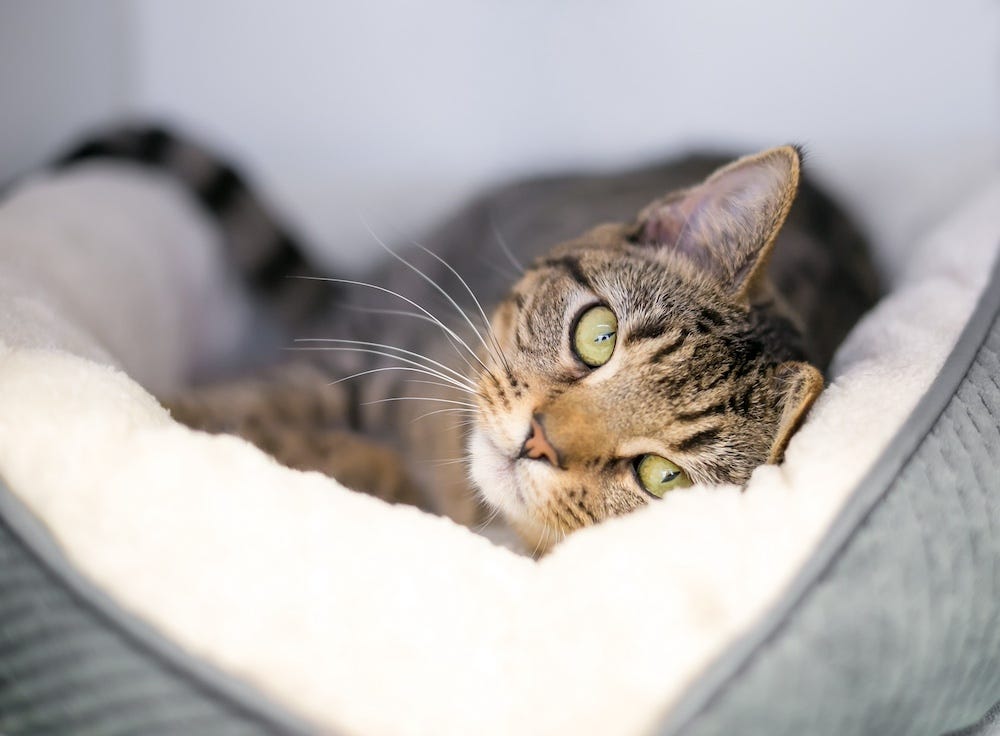
When your cat is in pain, small changes to their environment can make a big difference. Along with monitoring them closely and offering physical comfort, there are additional environmental changes you can make to help them feel more secure, less stressed, and promote healing.
- Use Feliway or pheromone diffusers: Feliway, a synthetic version of feline facial pheromones, mimics the scent cats naturally produce when they feel safe and content. Diffusing Feliway in your cat’s environment can reduce anxiety and promote relaxation, which is essential when they’re dealing with pain. Pheromone sprays can also be applied to carriers or beds to create comfort zones throughout your home.
- Provide environmental enrichment: While your cat might not feel up for running or playing, gentle forms of mental stimulation can improve their well-being. Try placing cozy blankets or soft toys in accessible places, or position scratching posts and cat trees where they don’t have to stretch too much. For injured or senior cats, provide interactive toys they can enjoy while lying down, such as feather wands you can gently move or puzzle feeders with treats.
- Create a calm, quiet space: It’s important not to underestimate the impact this can have on reducing stress in cats! Set up a quiet area where your cat can retreat and feel safe, away from noise or other pets. Providing options—like a cozy hiding spot or a warm bed—allows your cat to choose what feels most comfortable for them at any given time.
- Offer gentle interaction: Sit quietly near your cat and observe their body language. Some cats may appreciate light petting, while others prefer space. Respecting their cues is important for building trust and minimizing stress.
- Encourage rest: Let your cat sleep undisturbed, as rest helps with healing.
- Adjust food and water access: Place food, water, and litter boxes within easy reach to reduce movement.
If my cat is in pain, when should I bring them to the vet?
Timing is critical when it comes to managing pain in cats. If you notice persistent symptoms—like decreased appetite, mild limping, hiding, or abnormal grooming—it’s a good idea to schedule a vet visit as soon as possible.
However, some signs warrant immediate emergency care, such as:
- Rapid or open-mouth breathing
- Vocalization
- Inability to move
- Repeated vomiting
- Difficulty using the litter box
Even subtle changes can indicate a serious underlying disease since cats are skilled at masking pain. When in doubt, it’s better to err on the side of caution. Vet hospitals like Veterinary Emergency Group (VEG) allow you to call ahead to speak with a vet, helping you determine if your cat needs to be seen urgently. Acting quickly not only relieves your cat’s suffering but can also prevent minor issues from becoming major health problems.
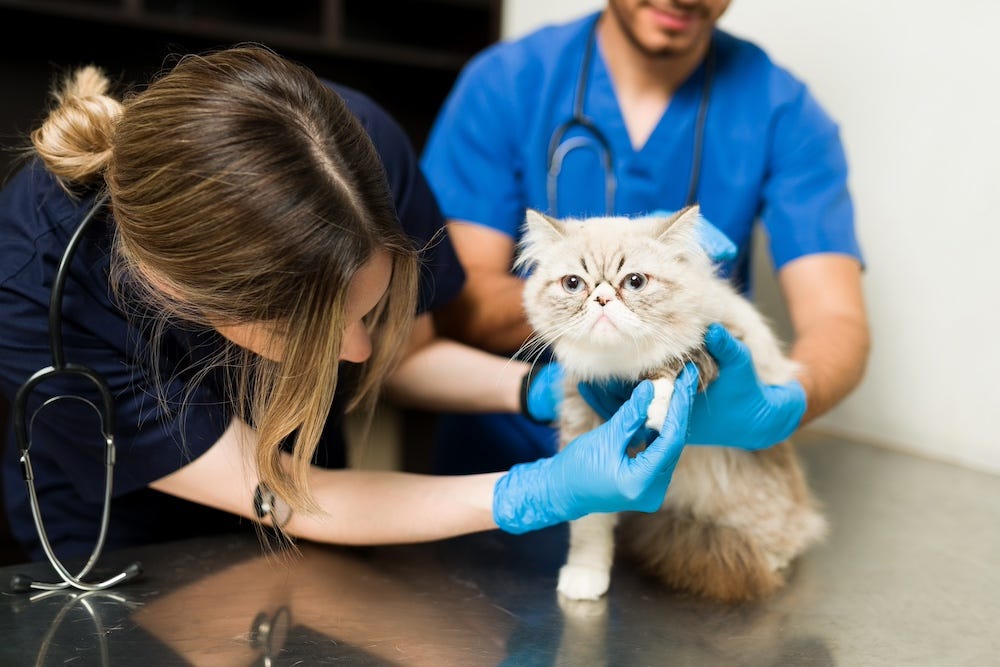
How vets treat pain in cats: What to expect
When you bring your cat to the vet for pain management, the goal is to provide safe, fast, and effective relief while addressing the underlying cause. A visit may include:
Assessment and diagnosis
The first step is a thorough physical exam to assess each body system for abnormalities, such as dehydration or pain. The vet will evaluate your cat's behavior, posture, and specific pain indicators, such as sensitivity to touch or decreased mobility. Based on your pet’s history and physical exam, the vet may recommend blood tests, X-rays, or ultrasounds to determine the source of your cat's pain.
Pain medication options
Based on the diagnosis, the vet may administer or prescribe pain relief medication, such as:
- Gabapentin: Commonly used for nerve pain or to reduce anxiety during stressful events.
- Non-Steroidal Anti-Inflammatory Drugs (NSAIDs): Like meloxicam or robenacoxib, used carefully in cats to manage chronic pain or inflammation.
- Opioids: Such as buprenorphine, typically prescribed for moderate to severe pain, especially after surgery or trauma.
Injectable or oral medications
In an emergency or post-surgery situation, your cat may receive injectable pain medication for immediate relief. For ongoing care, the vet may send you home with oral medications, accompanied by detailed instructions for safe administration.
Adjunct therapies
Some clinics offer additional treatments to complement pain relief, such as:
- Laser therapy: Helps reduce inflammation and accelerate healing in conditions like arthritis.
- Acupuncture: Can be used to help manage chronic pain in cats.
Monitoring and follow-up
The vet may recommend a follow-up visit to monitor your cat’s response to the treatment. Some medications, like NSAIDs, require regular blood work to ensure they aren’t causing adverse side effects.
By providing individualized treatment plans, veterinarians aim to alleviate pain while ensuring your cat's safety and comfort. If you use the Whisker app to track your cat’s weight and bathroom habits, this data can also help guide adjustments to your cat’s pain management plan alongside your veterinarian.
Using Litter-Robot to monitor for signs of illness
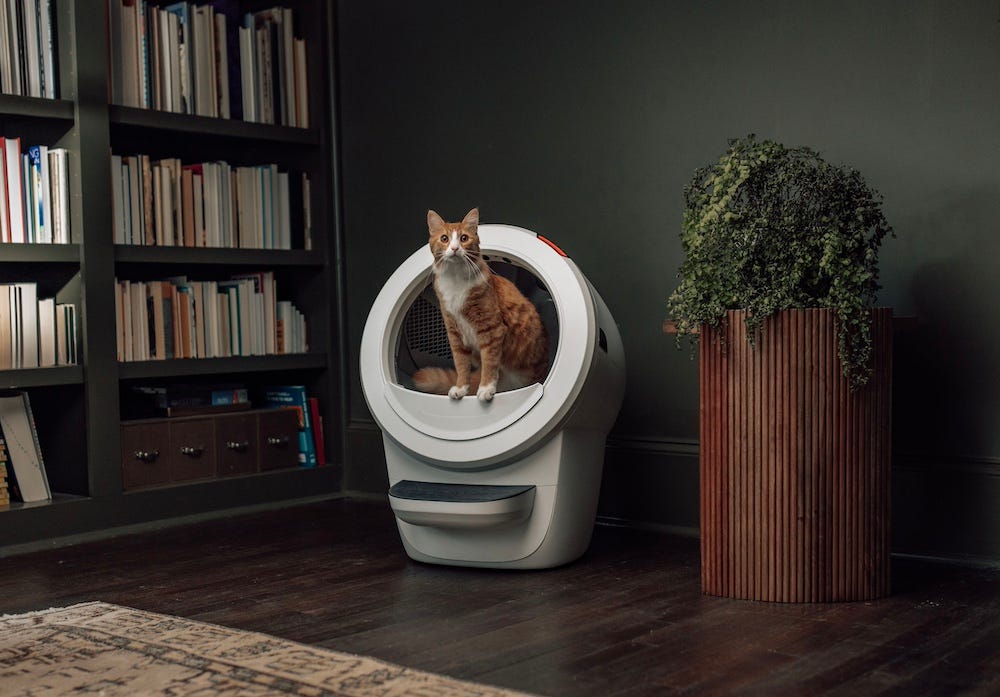
With insights into cats’ litter behaviors, Litter-Robot can be a valuable tool for monitoring signs of pain in your cat. Litter-Robot's built-in sensors and Whisker app provide real-time updates on your cat's habits since changes in litter box behavior—like frequent trips, straining, or avoiding the box altogether—can indicate discomfort. You’ll be alerted if there’s an unusual increase or decrease in usage.
This can signal underlying issues like feline lower urinary tract disease (FLUTD), a urinary tract infection, a urinary obstruction, constipation, or other serious and painful illnesses. Tracking these patterns helps you detect early signs of pain and take action to help your cat feel better.
Caring for your cat in pain
Spotting pain in cats requires a keen eye, but once you know what to look for, you can act quickly to help them feel better. Avoid the temptation to treat your cat with human pain relievers, as they can be harmful. Instead, focus on creating a comfortable environment and consult your veterinarian for safe medication options. By staying informed and proactive, you can ensure your cat gets the care and relief they need.
Sources:
